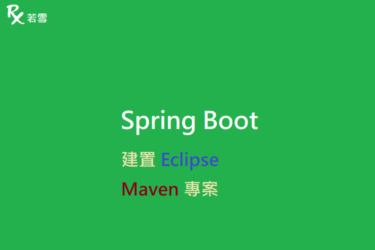Table of Contents
ToggleAssertJ Map Methods
這些斷言語句通常與 JUnit 測試一起使用,為用 Java 編寫的測試程式提供了流暢的斷言語句, 斷言的基本方法是 assertThat 方法,善用 AssertJ Map Java Methods 將有助於驗證效率的提升,本篇增加了範例,並透過單元測試來驗證產出結果。
檔案目錄
./
+- src
+- test
| +- org
| +- ruoxue
| +- spring_boot_168
| +- test
| +- assertj
| +- map
| +- AssertJMapMethodsTest.java 單元測試
AssertJ Map Methods Java 斷言集合的主要目的是取得集合的正確元素以進行斷言。
isNull
驗證是否為空值,若不成立,則會拋出 AssertionError 。
@Test
public void isNull() {
Map<String, Integer> map = null;
System.out.println(map);
assertThat(map).isNull();
Map<Integer, Integer> intMap = null;
System.out.println(intMap);
assertThat(intMap).isNull();
}null
nullisNotNull
AssertJ Map Methods Java 驗證是否不為空值,若不成立,則會拋出 AssertionError 。
@Test
public void isNotNull() {
Map<String, Integer> map = new HashMap<>();
map.put("Grape", 18);
map.put("Kiwifruit", 19);
map.put("Lemon", 20);
System.out.println(map);
assertThat(map).isNotNull();
Map<Integer, Integer> intMap = new HashMap<>();
intMap.put(1, 18);
intMap.put(2, 19);
intMap.put(3, 20);
System.out.println(intMap);
assertThat(intMap).isNotNull();
}{Grape=18, Kiwifruit=19, Lemon=20}
{1=18, 2=19, 3=20}
isEmpty
AssertJ Map Methods Java 驗證是否為空集合,若不成立,則會拋出 AssertionError 。
@Test
public void isEmpty() {
Map<String, Integer> map = new HashMap<>();
System.out.println(map);
assertThat(map).isEmpty();
Map<Integer, Integer> intMap = new HashMap<>();
System.out.println(intMap);
assertThat(intMap).isEmpty();
}[]
[]isNotEmpty
AssertJ Map Methods Java 驗證是否不為空集合,若不成立,則會拋出 AssertionError 。
@Test
public void isNotEmpty() {
Map<String, Integer> map = new HashMap<>();
map.put("Grape", 18);
map.put("Kiwifruit", 19);
map.put("Lemon", 20);
System.out.println(map);
assertThat(map).isNotEmpty();
Map<Integer, Integer> intMap = new HashMap<>();
intMap.put(1, 18);
intMap.put(2, 19);
intMap.put(3, 20);
System.out.println(intMap);
assertThat(intMap).isNotEmpty();
}{Grape=18, Kiwifruit=19, Lemon=20}
{1=18, 2=19, 3=20}
isNullOrEmpty
AssertJ Map Methods Java 驗證是否為空值或為空集合,若不成立,則會拋出 AssertionError 。
@Test
public void isNullOrEmpty() {
Map<String, Integer> map = null;
System.out.println(map);
map = new HashMap<>();
System.out.println(map);
assertThat(map).isNullOrEmpty();
Map<Integer, Integer> intMap = null;
System.out.println(intMap);
intMap = new HashMap<>();
System.out.println(intMap);
assertThat(intMap).isNullOrEmpty();
}null
[]
null
[]isEqualTo
AssertJ Map Methods in Java 驗證元素是否相等,若不成立,則會拋出 AssertionError 。
@Test
public void isEqualTo() {
Map<String, Integer> map = new HashMap<>();
map.put("Grape", 18);
map.put("Kiwifruit", 19);
map.put("Lemon", 20);
Map<String, Integer> map2 = new HashMap<>(map);
System.out.println(map);
System.out.println(map2);
assertThat(map).isEqualTo(map2);
Map<Integer, Integer> intMap = new HashMap<>();
intMap.put(1, 18);
intMap.put(2, 19);
intMap.put(3, 20);
Map<Integer, Integer> intMap2 = new HashMap<>(intMap);
System.out.println(intMap);
System.out.println(intMap2);
assertThat(intMap).isEqualTo(intMap2);
}{Grape=18, Kiwifruit=19, Lemon=20}
{Kiwifruit=19, Lemon=20, Grape=18}
{1=18, 2=19, 3=20}
{1=18, 2=19, 3=20}isNotEqualTo
AssertJ Map Methods in Java 驗證元素是否不相等,若不成立,則會拋出 AssertionError 。
@Test
public void isNotEqualTo() {
Map<String, Integer> map = new HashMap<>();
map.put("Grape", 18);
map.put("Kiwifruit", 19);
map.put("Lemon", 20);
Map<String, Integer> map2 = new HashMap<>();
System.out.println(map);
System.out.println(map2);
assertThat(map).isNotEqualTo(map2);
Map<Integer, Integer> intMap = new HashMap<>();
intMap.put(1, 18);
intMap.put(2, 19);
intMap.put(3, 20);
Map<Integer, Integer> intMap2 = new HashMap<>();
System.out.println(intMap);
System.out.println(intMap2);
assertThat(intMap).isNotEqualTo(intMap2);
}{Grape=18, Kiwifruit=19, Lemon=20}
{}
{1=18, 2=19, 3=20}
{}
isSameAs
AssertJ Map Functions in Java 驗證實例是否相等,若不成立,則會拋出 AssertionError 。
@Test
public void isSameAs() {
Map<String, Integer> map = new HashMap<>();
map.put("Grape", 18);
map.put("Kiwifruit", 19);
map.put("Lemon", 20);
Map<String, Integer> map2 = map;
System.out.println(map);
System.out.println(map2);
assertThat(map).isSameAs(map2);
Map<Integer, Integer> intMap = new HashMap<>();
intMap.put(1, 18);
intMap.put(2, 19);
intMap.put(3, 20);
Map<Integer, Integer> intMap2 = intMap;
System.out.println(intMap);
System.out.println(intMap2);
assertThat(intMap).isSameAs(intMap2);
}{Grape=18, Kiwifruit=19, Lemon=20}
{Grape=18, Kiwifruit=19, Lemon=20}
{1=18, 2=19, 3=20}
{1=18, 2=19, 3=20}isNotSameAs
AssertJ Map Functions in Java 驗證實例是否不相等,若不成立,則會拋出 AssertionError 。
@Test
public void isNotSameAs() {
Map<String, Integer> map = new HashMap<>();
map.put("Grape", 18);
map.put("Kiwifruit", 19);
map.put("Lemon", 20);
Map<String, Integer> map2 = new HashMap<>(map);
System.out.println(map);
System.out.println(map2);
assertThat(map).isNotSameAs(map2);
Map<Integer, Integer> intMap = new HashMap<>();
intMap.put(1, 18);
intMap.put(2, 19);
intMap.put(3, 20);
Map<Integer, Integer> intMap2 = new HashMap<>(intMap);
System.out.println(intMap);
System.out.println(intMap2);
assertThat(intMap).isNotSameAs(intMap2);
}{Grape=18, Kiwifruit=19, Lemon=20}
{Kiwifruit=19, Lemon=20, Grape=18}
{1=18, 2=19, 3=20}
{1=18, 2=19, 3=20}AssertJMapMethodsTest.java
AssertJ Map Methods in Java 新增單元測試,驗證是否符合預期。
package org.ruoxue.spring_boot_168.test.assertj.map;
import static org.assertj.core.api.Assertions.*;
import java.util.HashMap;
import java.util.Map;
import org.junit.jupiter.api.Test;
public class AssertJMapMethodsTest {
@Test
public void isNull() {
Map<String, Integer> map = null;
System.out.println(map);
assertThat(map).isNull();
Map<Integer, Integer> intMap = null;
System.out.println(intMap);
assertThat(intMap).isNull();
}
@Test
public void isNotNull() {
Map<String, Integer> map = new HashMap<>();
map.put("Grape", 18);
map.put("Kiwifruit", 19);
map.put("Lemon", 20);
System.out.println(map);
assertThat(map).isNotNull();
Map<Integer, Integer> intMap = new HashMap<>();
intMap.put(1, 18);
intMap.put(2, 19);
intMap.put(3, 20);
System.out.println(intMap);
assertThat(intMap).isNotNull();
}
@Test
public void isEmpty() {
Map<String, Integer> map = new HashMap<>();
System.out.println(map);
assertThat(map).isEmpty();
Map<Integer, Integer> intMap = new HashMap<>();
System.out.println(intMap);
assertThat(intMap).isEmpty();
}
@Test
public void isNotEmpty() {
Map<String, Integer> map = new HashMap<>();
map.put("Grape", 18);
map.put("Kiwifruit", 19);
map.put("Lemon", 20);
System.out.println(map);
assertThat(map).isNotEmpty();
Map<Integer, Integer> intMap = new HashMap<>();
intMap.put(1, 18);
intMap.put(2, 19);
intMap.put(3, 20);
System.out.println(intMap);
assertThat(intMap).isNotEmpty();
}
@Test
public void isNullOrEmpty() {
Map<String, Integer> map = null;
System.out.println(map);
map = new HashMap<>();
System.out.println(map);
assertThat(map).isNullOrEmpty();
Map<Integer, Integer> intMap = null;
System.out.println(intMap);
intMap = new HashMap<>();
System.out.println(intMap);
assertThat(intMap).isNullOrEmpty();
}
@Test
public void isEqualTo() {
Map<String, Integer> map = new HashMap<>();
map.put("Grape", 18);
map.put("Kiwifruit", 19);
map.put("Lemon", 20);
Map<String, Integer> map2 = new HashMap<>(map);
System.out.println(map);
System.out.println(map2);
assertThat(map).isEqualTo(map2);
Map<Integer, Integer> intMap = new HashMap<>();
intMap.put(1, 18);
intMap.put(2, 19);
intMap.put(3, 20);
Map<Integer, Integer> intMap2 = new HashMap<>(intMap);
System.out.println(intMap);
System.out.println(intMap2);
assertThat(intMap).isEqualTo(intMap2);
}
@Test
public void isNotEqualTo() {
Map<String, Integer> map = new HashMap<>();
map.put("Grape", 18);
map.put("Kiwifruit", 19);
map.put("Lemon", 20);
Map<String, Integer> map2 = new HashMap<>();
System.out.println(map);
System.out.println(map2);
assertThat(map).isNotEqualTo(map2);
Map<Integer, Integer> intMap = new HashMap<>();
intMap.put(1, 18);
intMap.put(2, 19);
intMap.put(3, 20);
Map<Integer, Integer> intMap2 = new HashMap<>();
System.out.println(intMap);
System.out.println(intMap2);
assertThat(intMap).isNotEqualTo(intMap2);
}
@Test
public void isSameAs() {
Map<String, Integer> map = new HashMap<>();
map.put("Grape", 18);
map.put("Kiwifruit", 19);
map.put("Lemon", 20);
Map<String, Integer> map2 = map;
System.out.println(map);
System.out.println(map2);
assertThat(map).isSameAs(map2);
Map<Integer, Integer> intMap = new HashMap<>();
intMap.put(1, 18);
intMap.put(2, 19);
intMap.put(3, 20);
Map<Integer, Integer> intMap2 = intMap;
System.out.println(intMap);
System.out.println(intMap2);
assertThat(intMap).isSameAs(intMap2);
}
@Test
public void isNotSameAs() {
Map<String, Integer> map = new HashMap<>();
map.put("Grape", 18);
map.put("Kiwifruit", 19);
map.put("Lemon", 20);
Map<String, Integer> map2 = new HashMap<>(map);
System.out.println(map);
System.out.println(map2);
assertThat(map).isNotSameAs(map2);
Map<Integer, Integer> intMap = new HashMap<>();
intMap.put(1, 18);
intMap.put(2, 19);
intMap.put(3, 20);
Map<Integer, Integer> intMap2 = new HashMap<>(intMap);
System.out.println(intMap);
System.out.println(intMap2);
assertThat(intMap).isNotSameAs(intMap2);
}
}
心得分享
AssertJ Map Functions in Java 是一個 Java 庫,提供了一組豐富的斷言和真正有用的錯誤訊息,驗證 Map 是否為空值、空集合、指定類別實例、元素相等, 提高了測試程式碼的可讀性,使用 AssertJ Map Methods in Java 流式斷言,提高了測試程式碼的可讀性。




